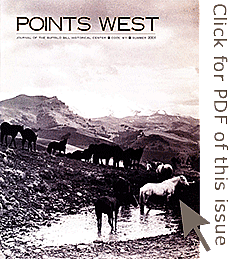
Frontier Photographers – Points West Online
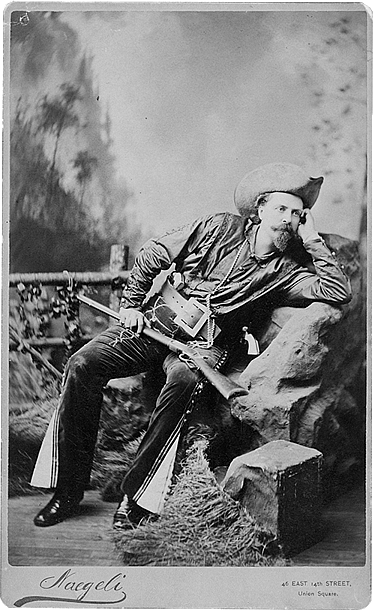
Originally published in Points West magazine in Summer 2001
Frontier Photographers
By Nathan Bender
Former Housel Curator, McCracken Research Library
Photographs have documented the western American frontier from the time of their first appearance in the region in the 1850s. The collections of the McCracken Research Library offer a diverse sampling of the works of many western photographers. From the unknown to the legendary, photographers created an historic archive of unparalleled value by recording the west as they actually saw it and as they wished viewers to see it. The settling of the frontier west was unusual in its self-consciousness regarding the passing of a unique time in American history. Many photographers attempted to document the Old West while it was still possible to do so, even as William F. Cody was literally collecting up elements of the frontier to show to the rest of the world, via Buffalo Bill’s Wild West.
One of the oldest, if not the oldest*, pictures in the collections of the McCracken Research Library is a tintype of William F. Cody in 1857 at age eleven. Although the photographer is not known, the picture is representative of the family portraits being taken at the time both on the frontier and throughout the rest of the nation.

*Ed. note: since this article was written in 2001, we’ve located earlier photos of Will Cody; see the post “Oldest photo?“
Portrait shots of individuals continued in popularity and the photographs evolved into prints mounted on cardstock, known as cartes-de-visites and cabinet cards. Many of these later portraits are well represented in our holdings.
Our library includes photographs from several frontier photographers who were not satisfied with limiting their work to family portraits and who were adamant about documenting the Old West. This includes such notables as William Henry Jackson (1843–1942), F. Jay Haynes (1853–1921), L.A. Huffman (1854–1931), David F. Barry (1854–1934), and John C.H. Grabill.
Jackson has the distinction of being the first to photograph inside what is now Yellowstone National Park in 1871 as part of F.V. Hayden’s scientific expedition. Stereoviews by Jackson were quite popular at the time, and were among the earliest photographs of the Park.
F. Jay Haynes also became known for his work in Yellowstone National Park, though he also traveled and photographed widely in the west due to his association with the Northern Pacific Railroad.
John C.H. Grabill was active in the Dakotas from 1887 – 1891 and became known for his American Indian photographs, including the aftermath of Wounded Knee.

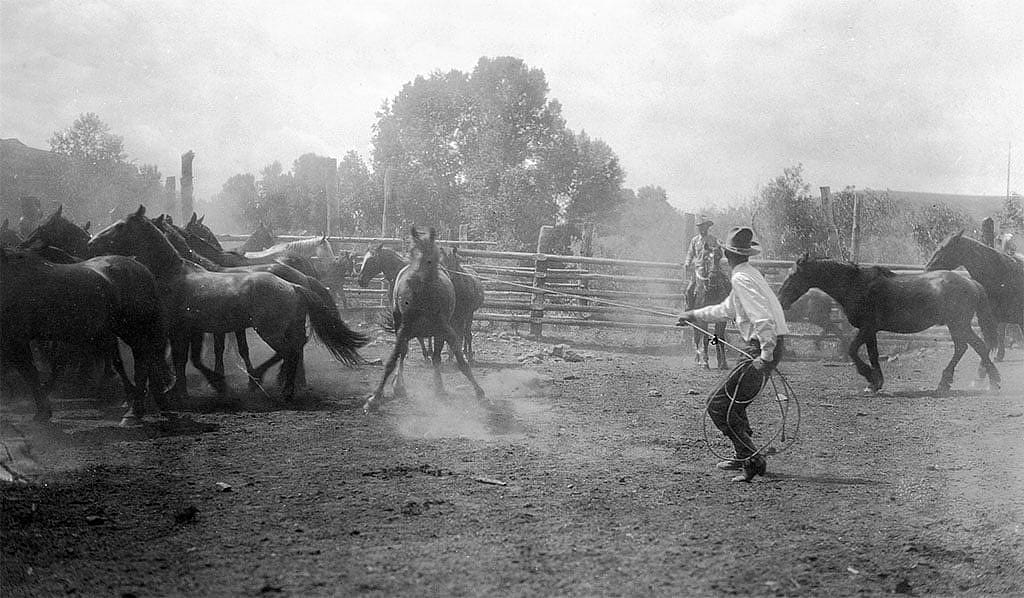
L.A. Huffman, a friend of Haynes, is well known for his work out of Fort Keogh and Miles City, Montana, documenting the Montana frontier from as early as 1879. His photographs include cowboy life on the open range, hunting and wildlife views such as the last wild herds of buffalo, and his work with the Northern Cheyenne, Crow, and other Plains Indians. Original Huffman prints and manuscripts from his home photographic studio now within our library comprise one of the major Huffman collections available to researchers in the nation.
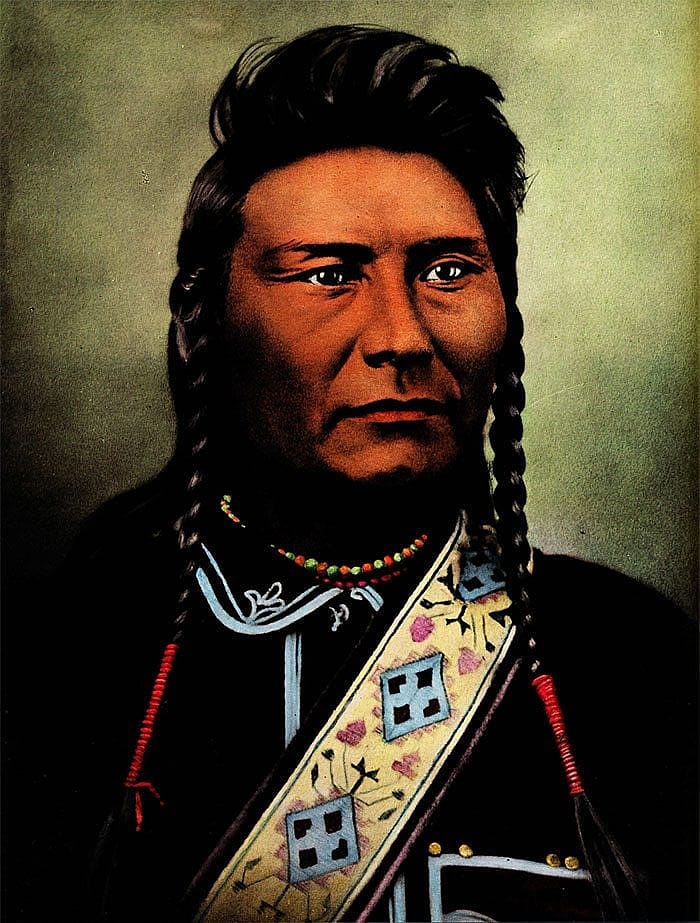
David F. Barry, a friend of William F. Cody, shot many portraits of famous westerners, including prominent American Indians and U.S. military officers. After Cody’s death in 1917 and the establishment of the Buffalo Bill Museum in the 1920s, Barry donated many of his prints to the museum. The further acquisition of additional prints has resulted in the library having a significant D.F. Barry collection.
Photographs of Buffalo Bill’s Wild West were made by many different photographers given that the show traveled extensively. Cody started his theatrical performances in the 1870s and the Wild West in the early 1880s.
Cabinet cards from eastern studio photographers were used for publicity purposes for performers, including Annie Oakley. Action photographs of the performances could be quite dramatic, as was the show itself.
The McCracken Research Library has thousands of images of Buffalo Bill’s Wild West that together comprise a research collection of international significance.
Ed. note: view thousands of the McCracken’s digital images at library.centerofthewest.org.
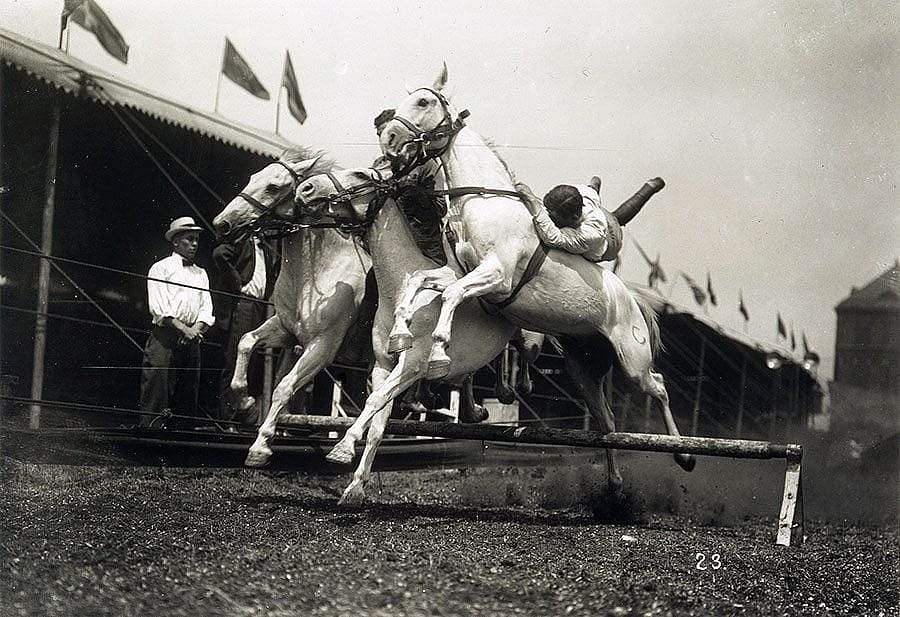
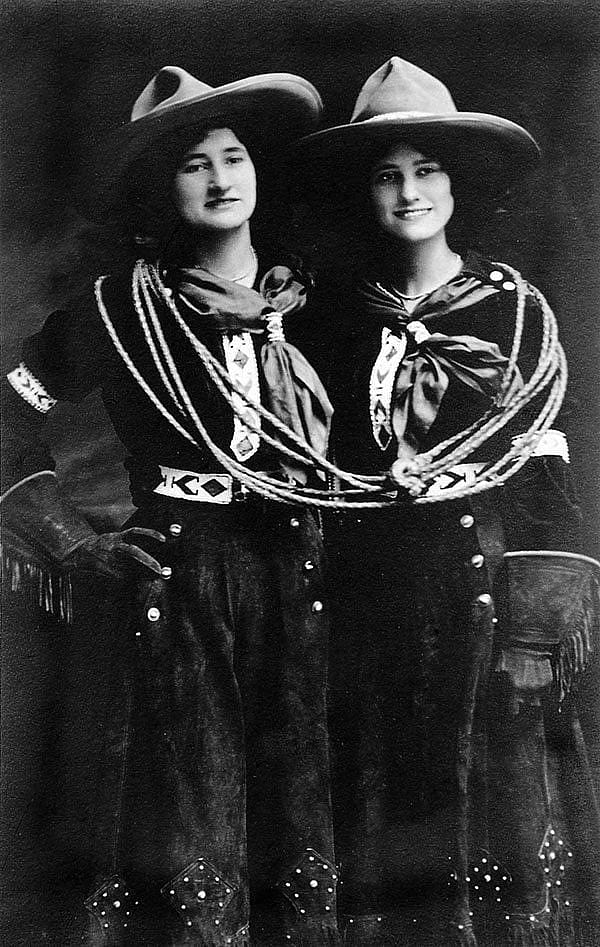
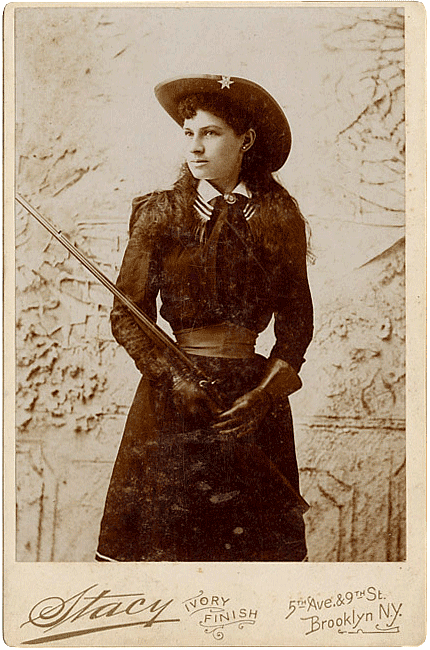
Post 125
Written By
Nancy McClure
Nancy now does Grants & Foundations Relations for the Center of the West's Development Department, but was formerly the Content Producer for the Center's Public Relations Department, where her work included writing and updating website content, publicizing events, copy editing, working with images, and producing the e-newsletter Western Wire. Her current job is seeking and applying for funding from government grants and private foundations. In her spare time, Nancy enjoys photography, reading, flower gardening, and playing the flute.
